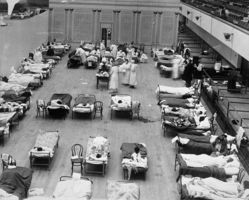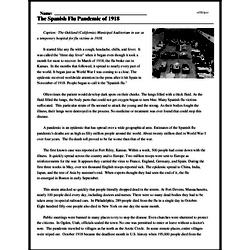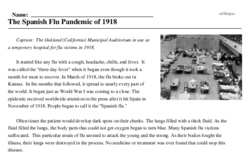The Spanish Flu Pandemic of 1918
Caption: The Oakland (California) Municipal Auditorium in use as a temporary hospital for flu victims in 1918.
It started like any flu with a cough, headache, chills, and fever. It was called the "three day fever" when it began even though it took a month for most to recover. In March of 1918, the flu broke out in Kansas. In the months that followed, it spread to nearly every part of the world. It began just as World War I was coming to a close. The epidemic received worldwide attention in the press after it hit Spain in November of 1918. People began to call it the "Spanish flu."
Often times the patient would develop dark spots on their cheeks. The lungs filled with a thick fluid. As the fluid filled the lungs, the body parts that could not get oxygen began to turn blue. Many Spanish flu victims suffocated. This particular strain of flu seemed to attack the young and the strong. As their bodies fought the illness, their lungs were destroyed in the process. No medicine or treatment was ever found that could stop this disease.




